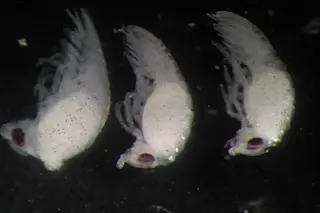On a sunny day last summer, marine conservation science graduate student Don Marx was in his happy place — in a boat with a rod and reel in hand. The vessel drifted a few miles off shore near Cape Agulhas, the southernmost tip of the African continent. As a marine biology nerd and South African local, Marx knew the waters below him housed a particularly diverse ecosystem. Along this coastline, the cold, nutrient-rich water from the Arctic Ocean mixes with the life-giving warmth of the Indian Ocean, creating a hotspot for endemic species.
When he pulled in the next fish, Marx was pleased to see that it was a carpenter seabream, a near-threatened carnivorous fish. When he opened the creature’s mouth to pull the hook out, his day got a whole lot more interesting.
“Nothing could really prepare me for the moment I opened the carpenter’s mouth and saw this ...















